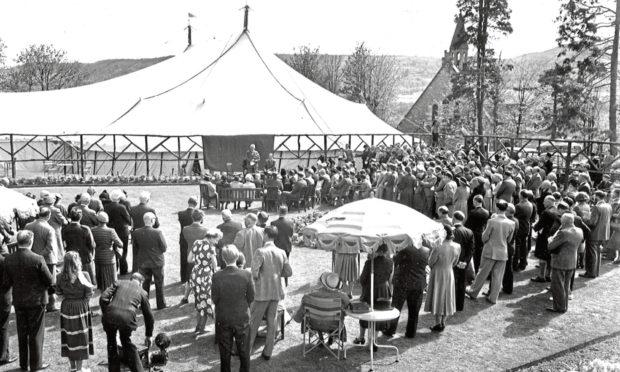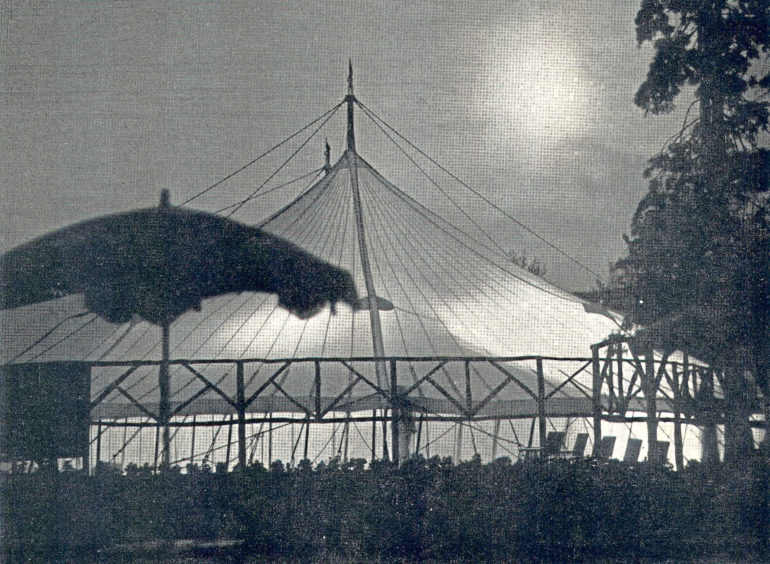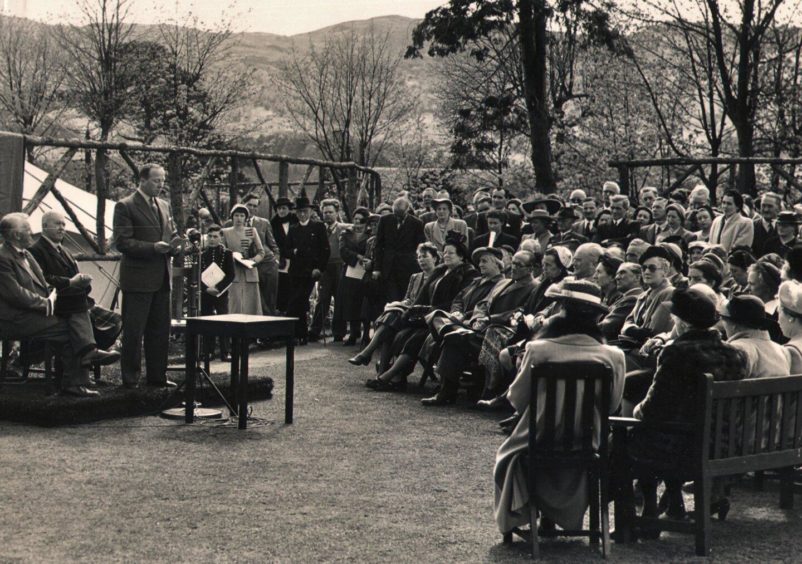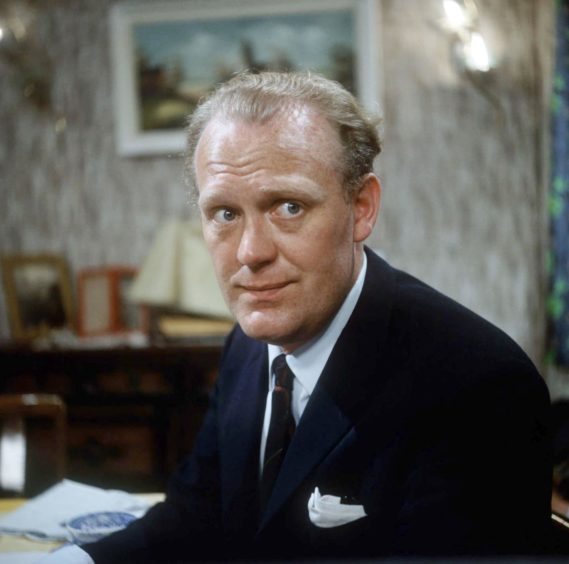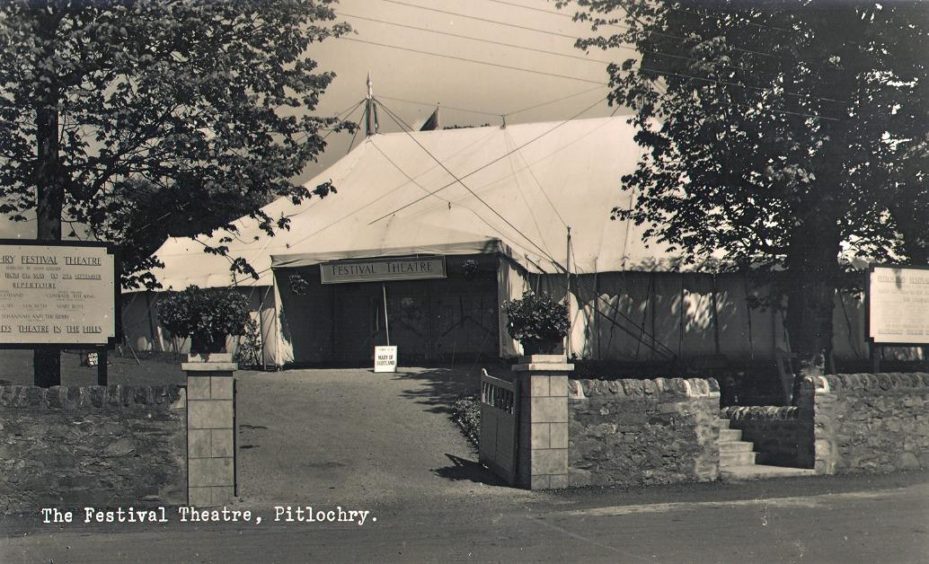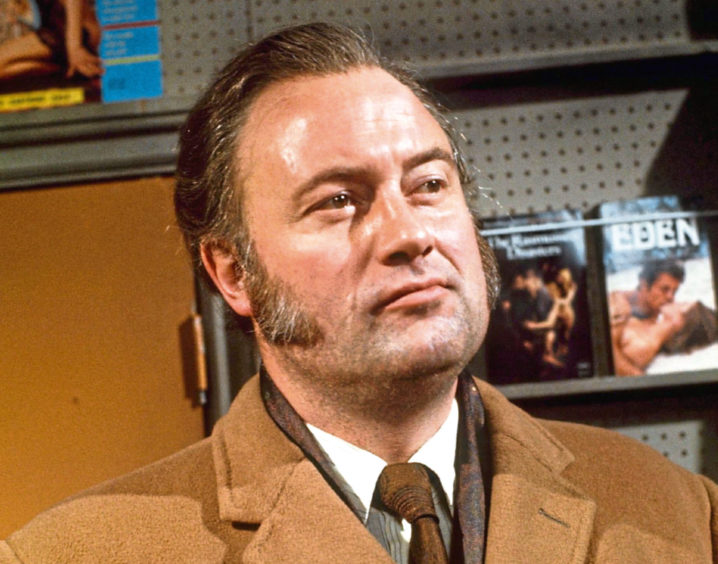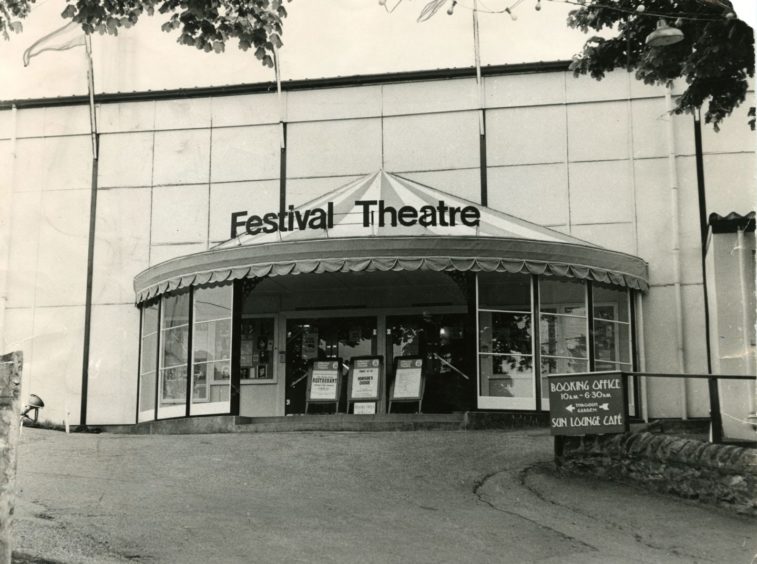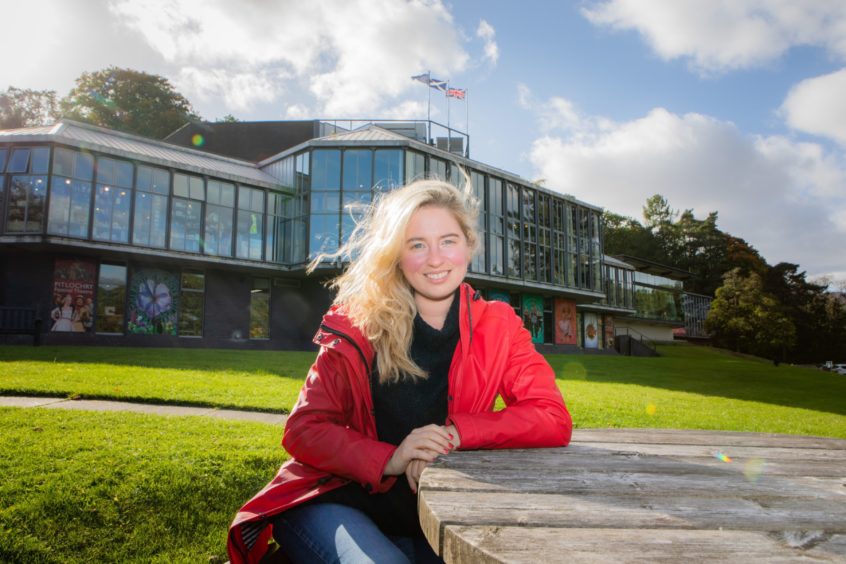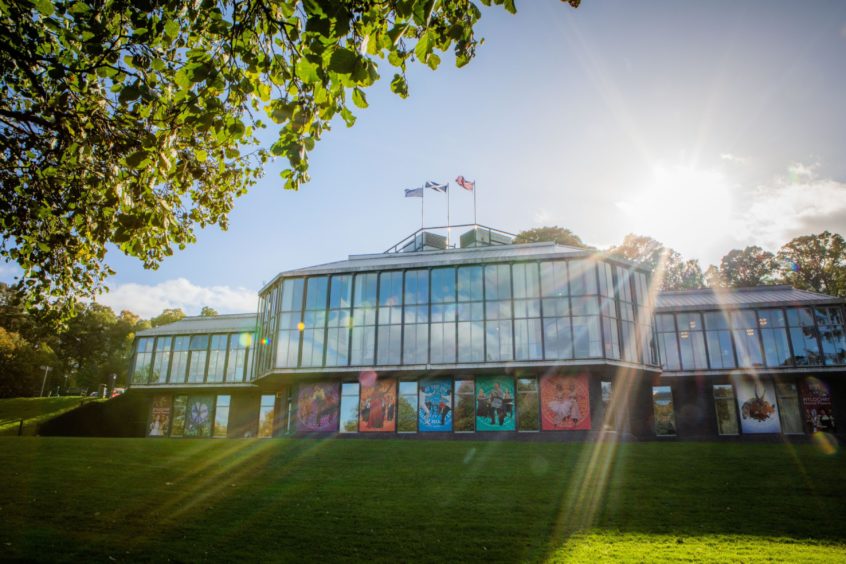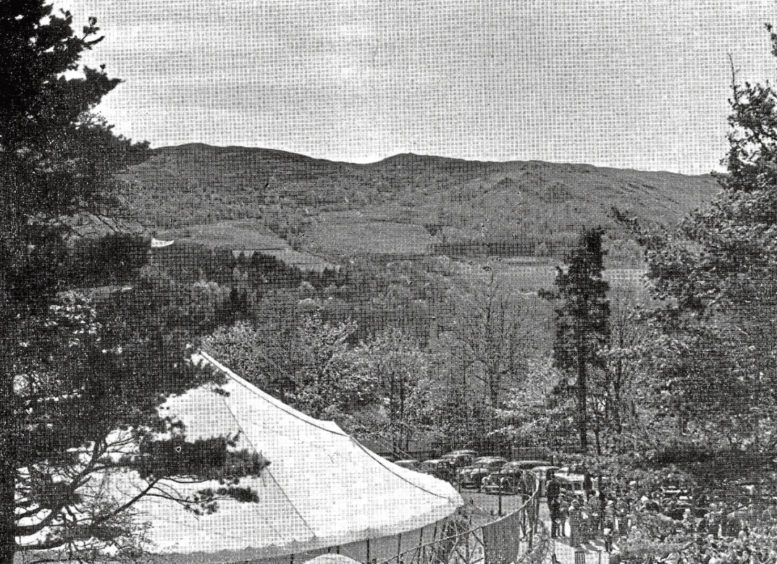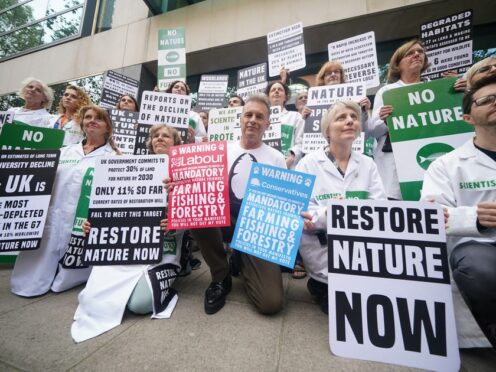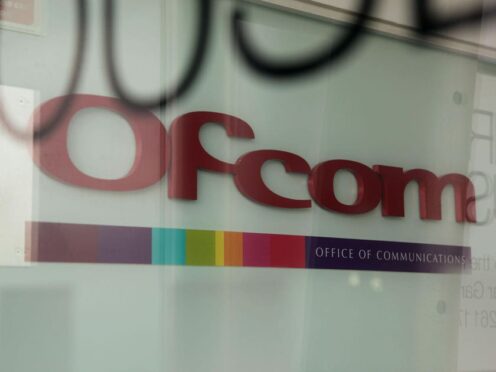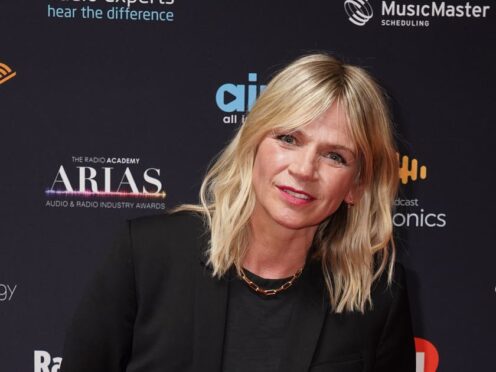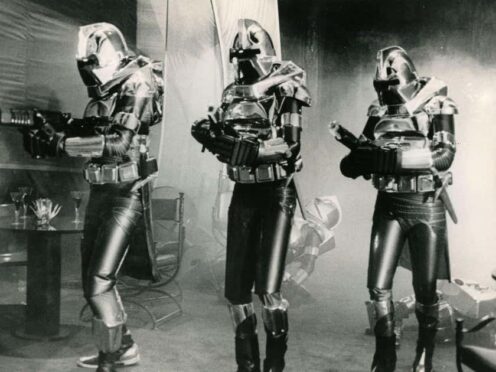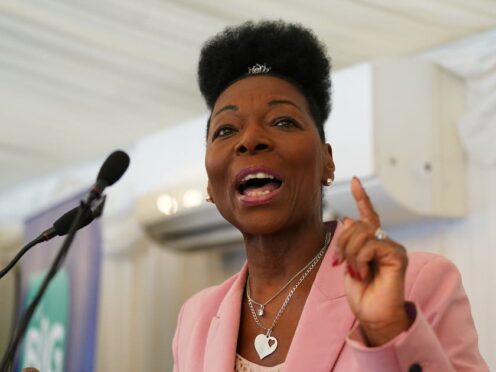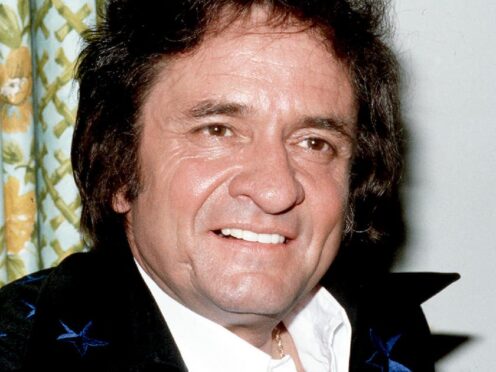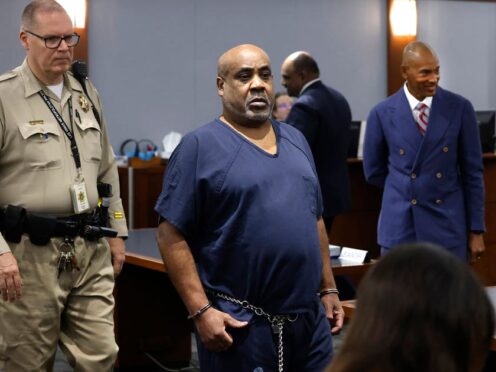Since its birth in a canvas tent in 1951, Pitlochry Festival Theatre has evolved to become one of Scotland’s most unique treasures. As it reopens for summer, Gayle Ritchie looks at its changing fortunes.
John Stewart was a true visionary–a passionate, determined man on a mission.
A leading promoter of amateur dramatics in Glasgow, when he visited Pitlochry in 1944, in the latter stages of the Second World War, he fell hook, line and sinker for its beauty and charm.
This fashionable Highland Perthshire resort, he decided, would be the ideal location for his dream theatre.
Before he left, John concealed a slip of paper in a wayside post on the banks of the River Tummel. It read: “When peace is declared I shall return to this spot to give thanks to God and to establish my Festival.”
On VE day, John recovered that same slip of paper, spoke his silent prayer beneath the open sky and vowed again to fulfil his promise.
Moving to the Perthshire town in 1949, he bought the Victorian villa Knockendarroch House, and hoped a site could be found for his theatre within the grounds. However, rationing of building materials meant licences were needed from the Ministry of Works, which would normally issue them for essential building purposes only.
John knew he had no choice but to apply and launched a vigorous press campaign, contending that his dream theatre would bring tourists and money to the area–that it would be an asset to Scotland. Despite his campaign, his application was refused. Not a man to give up, John turned his thoughts to the concept of a tent theatre, having visited a couple in London and Birmingham for inspiration. Following their example, he went ahead and bought a large tent, curtains and lights; things were looking promising.
A generous man
With the support of Tom Johnston, chairman of the Scottish Tourist Board, John gained permission from the Ministry of Works for a small amount of steel and timber to construct platforms for both stage and seating. All of this, he paid for out of his own pockets. He was a generous man, passionate about the arts and unwilling to give up on his dream.
Finally, on May 19 1951, Pitlochry Festival Theatre opened with the British premiere of Maxwell Anderson’s Mary of Scotland, with Joss Ackland as Darnley.
In his opening address, for which he received a standing ovation, Tom said: “This theatre is a monument to one man’s courage, one man’s persistence, and one man’s great faith”. And so it was. By venturing his fortune, John had ensured that his cherished dream had become a reality.
Theatre-goers loved the unique edifice and flocked from all over the country to enjoy performances galore. It had cost about £13,000 to erect and fit out that first tented theatre, of which the tent itself cost £3,000. It had a capacity of 498 seats–in only 12 rows–and, in that first season in 1951, more than 35,000 seats were sold, about 50% of total capacity. Including guests and concessions, some 43,000 people came to see the first six plays. The not-unexpected loss at the end of the first season was £12,000.
Storm disaster
Disaster struck in 1952 when a storm ripped the tent’s canvas, compounding the theatre’s financial plight. It seemed this unique theatre in the hills might be forced to close, because John simply could not afford to build another tent from scratch.
Instead, he formed a charity, the Pitlochry Festival Society, handing over his house, grounds, workshops and what was left of the tent theatre as a gift to the society.
“This theatre is a monument to one man’s courage, one man’s persistence, and one man’s great faith.”
Tom Johnston
In return he was appointed festival director, with the right to live in what had been his own home.
Because of the storm damage, the original tent could no longer be used. Instead, a new outer steel framework, clad in asbestos, was erected.
Inside, much of the old tent was re-erected, without the need for poles or guy ropes. The look and feel of the original tent were preserved, without the visual hindrance of poles, the flimsiness or constant movement of canvas in the breeze. The number of seats increased to 502, not far off today’s 538.
Some famous actors performed at the theatre early on: Joss Ackland, Jean Forbes-Robertson, Graham Crowden, Eve Pearce, Lewis Jones, Iain Cuthbertson, who was referred to at the time as “Scotland’s leading actor”, and Mollie Sugden. But it was clear from the start that the company never relied on “stars”. It was the entirety of the ensemble which was important–and still is.
Two plays staged in 1953–The Rivals and The Importance Of Being Earnest–helped the theatre to end the season with a surplus of £1,000 and a newfound confidence.
Sudden death
Tragedy struck during the sixth season in 1957, when John died suddenly at the age of only 55. His place as festival director was then taken over by Kenneth Ireland.
In 1960, the theatre welcomed its first royal visitor when the Queen Mother watched a matinee performance of The Admirable Crichton by JM Barrie. By all accounts, she had a wonderful afternoon.
In 1971, the theatre board started planning for the creation of a new theatre–a more permanent and functional building but one which preserved the intimacy between players and audience. The new theatre opened at Port-na-craig, on the banks of River Tummel and adjacent to the dam and fish ladder, on May 19 1981.
The official opening took place on July 9 1981 when the Prince of Wales attended a performance of The Murder of Auguste Dupin.
In 1999, a start was made on building a new botanical garden, named the Explorers’ Garden, in seven acres of woodland between the theatre and the grounds of the dam. And in 2000, the theatre underwent a major refurbishment.
Facing the future
Elizabeth Newman, PFT’s artistic director since 2018, is hugely excited about the summer season and cannot wait to welcome audiences back.
“The theatre has faced many hard times over the past 70 years, not least the past 14 months,” she muses.
“Like so many theatres, we have worked incredibly hard to survive the global pandemic.
“When the theatre opened in 1951 people noted the courage, persistence and great faith that it took to make that happen.
“We believe it is this courage, persistence and faith that remains at the heart of what makes PFT so special.
“It is certainly this energy which has powered our work to get this 70th anniversary summer season ready during such unprecedented times.”
With various Covid-19-related restrictions in force, PFT has decided to stage shows outdoors–with a staggering 144 events planned over summer.
“We’ll celebrate our landscape and reconnect with our tent days in the early 1950s!” says Elizabeth.
“PFT is known for six plays in six days but this summer, you can see 17 different performances: musical theatre, opera, family shows, new plays, classic drama and comedy.”
“We’ll celebrate our landscape and reconnect with our tent days in the early 1950s!”
Elizabeth Newman
Elizabeth, who calls PFT a “memory-making place” and “a theatre for all and a theatre for a lifetime”, is looking forward to making new memories with audiences in one of the performance spaces outdoors–the amphitheatre, bandstand, riverboat and the Explorers’ Garden. One show will also be staged in the Serenity Garden at nearby Holy Trinity Episcopal Church.
“We pride ourselves on growing three things in Pitlochry: plays, plants and people,” reflects Elizabeth.
“So, as we look back over the last 70 years, we also look forward to things we hope to grow in the future. We want to grow more people, more plays and more plants by the River Tummel.
“We believe there’s something very magical about PFT and are working hard to ensure the next 70 years will be as rich and life-affirming as the last.
“We have constantly found ourselves in dialogue with the world and been inspired to adapt and change.
“After all, we transformed from being a theatre tent to a theatre building, but I’m proud to say we’ve never given up on doing what we do best – creating a wonderful festival each summer.”
Elizabeth believes John Stewart would approve of the theatre in 2021 “in lots of ways”.
She adds: “In the same way as he originally had to put up a tent, I’m now conceiving how we make our festival work, unable to rely on the bricks and mortar we love so dearly.
“And I cannot help thinking PFT must find its place back in the landscape again, as the original Festival Theatre did.”
For details of the summer season programme, see pitlochryfestivaltheatre.com
